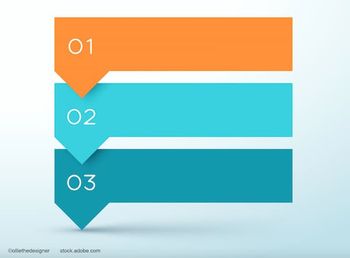
Ocular Therapeutix randomizes first patient in HELIOS-3
Key Takeaways
- AXPAXLI, a bioresorbable hydrogel with axitinib, targets NPDR, aiming to reduce treatment frequency and improve patient outcomes.
- HELIOS-2 and HELIOS-3 studies compare AXPAXLI to ranibizumab and sham, focusing on efficacy and dosing intervals.
HELIOS-3 is a phase 3 registrational program for AXPAXLI (or OTX-TKI) for the treatment of non-proliferative diabetic retinopathy (NPDR).
Ocular Therapeutix has randomized the first patient in its HELIOS-3 phase 3 registrational program for AXPAXLI (or OTX-TKI) for the treatment of non-proliferative diabetic retinopathy (NPDR).
The company describes AXPAXLI as an investigational, bioresorbable, intravitreal hydrogel incorporating axitinib, a small-molecule, multi-target tyrosine kinase inhibitor with anti-angiogenic properties. It is currently being evaluated for the treatment of wet AMD, diabetic retinopathy, diabetic macular edema, and other retinal diseases.1
Pravin U. Dugel, MD, executive chairman, president, and CEO of Ocular Therapeutix, commented on the program, saying, “Initiating the HELIOS registrational program marks a pivotal step toward redefining treatment for diabetic retinal disease. While there are more than 6 million NPDR patients in the US, fewer than 1% receive therapy today, due mostly to the burden of frequent injections in this working-age population. AXPAXLI’s potential to deliver efficacy with attractive durability could help hundreds of thousands, if not millions, more patients preserve vision.”
The HELIOS program from Ocular Therapeutix is comprised of 2 complementary superiority studies, HELIOS-2 and HELIOS-3. The program is designed to evaluate whether early AXPAXLI treatment, as infrequent as every 12 months, can meaningfully alter the course of NPDR. HELIOS-2 is a multicenter, double-masked, randomized (1:1), parallel-group superiority study comparing AXPAXLI (0.3 mg) dosed every 12 months to ranibizumab (0.3 mg). The trial will look at approximately 432 patients with moderately severe to severe NPDR without center-involved diabetic macular edema (CI-DME). Patients will be evaluated monthly throughout the trial and will remain masked until the end of year 2.
HALIOS-3 is a multicenter, double-masked, randomized (1:1:1), three-arm study. comparing 6- and 12-month dosing regimens of AXPAXLI to sham. The trial will examine approximately 930 patients with moderately severe to severe NPDR without CI-DME. Patients in the first arm will receive a single dose of AXPAXLI at day 1 and are re-dosed at week 24; patients in the second arm will receive a single dose of AXPAXLI at day 1 and sham at week 24; and patients in the third arm will receive sham at day 1 and at week 24, aligned with the AXPAXLI treatment arms for adequate masking.
Both studies utilize a novel ordinal ≥2-step diabetic retinopathy severity score (DRSS) primary endpoint and will be assessed at week 52. The company noted that it has aligned with the FDA on its novel ordinal DRSS endpoint in its Special Protocol Assessment (SPA) from August 2025.2
“The HELIOS study designs reflect our intentional and strategic clinical philosophy: combining scientific rigor, outstanding clinical execution, and a focus on de-risking with regulatory alignment to optimize the potential for success and a label that readily translates into broad adoptability. By aiming for a superiority-based DR label that spans the full continuum of disease—including NPDR and DME—we believe AXPAXLI could deliver a market opportunity that is not merely incremental but transformative for patients, physicians, and payors around the world,” added Dugel.
Allen Hu, MD, principal investigator at Cumberland Valley Retina Consultants, commented, “AXPAXLI shows significant promise to address the unmet need for an effective treatment with durable efficacy, based on the encouraging HELIOS-1 data. Given the rapid enrollment and outstanding execution of the SOL studies for AXPAXLI in wet AMD, I have full confidence that the Ocular clinical team will deliver another highly successful program in NPDR.”
HELIOS-1 trial results
Results from HELIOS-1 showed stability or improvement in the DRSS, and generally the drug was well tolerated. No patients in the AXPAXLI arm developed PDR or CI-DME through week 48; in contrast, in the sham control arm, 37.5% developed PDR or CI-DME through week 48. Additionally, AXPAXLI showed DRSS stability or improvement with durability through 48 weeks; 23.1% of patients in the OTX-TKI arm had a 2-step or greater DRSS improvement, and 46.2% of patients had a 1- or 2-step or greater DRSS improvement at 48 weeks. The DRSS did not worsen at 48 weeks in any patients in the OTX-TKI arm.3
References:
Ocular Therapeutix™ Announces First Patient Randomized in HELIOS-3 Phase 3 Registrational Program for AXPAXLI™ in NPDR. Published November 24, 2025. Accessed November 24, 2025.
https://www.globenewswire.com/news-release/2025/11/24/3193355/0/en/Ocular-Therapeutix-Announces-First-Patient-Randomized-in-HELIOS-3-Phase-3-Registrational-Program-for-AXPAXLI-in-NPDR.html Harp MD. Ocular Therapeutix receives FDA agreement under special protocol assessment for registrational trial of AXPAXLI. Published August 13, 2025. Accessed November 24, 2025.
https://www.ophthalmologytimes.com/view/ocular-therapeutix-receives-fda-agreement-under-special-protocol-assessment-for-registrational-trial-of-axpaxli Charters L. 1-year results from HELIOS trial show stability or improvement in treating NPDR. Published January 23, 2025. Accessed November 24, 2025.
https://www.ophthalmologytimes.com/view/1-year-results-from-helios-trial-show-stability-or-improvement-in-treating-npdr
Newsletter
Don’t miss out—get Ophthalmology Times updates on the latest clinical advancements and expert interviews, straight to your inbox.













































.png)


